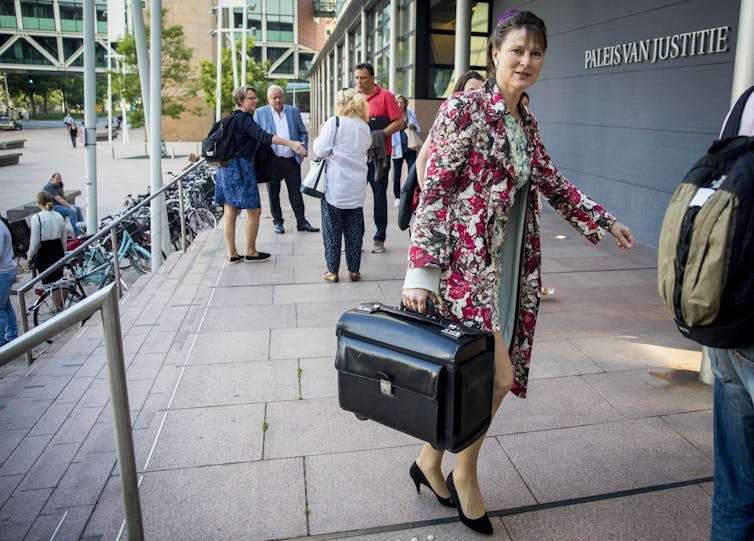The international community has widely acknowledged the severe threats posed by the impacts of climate change to a series of human rights, including the rights to life, health, and an adequate standard of living. But a stark gap has emerged between this acknowledgement in global climate policy – evidenced by a non-binding clause in the preamble of the Paris Agreement – and their actions to meet promised targets.
How can we hold governments accountable to their human rights duties? A Dutch case recently upheld by the appeals court might hold the answer.
In June 2015, The Hague District Court and a group of 886 concerned citizens, united by the environmental interest group Urgenda Foundation, made history. This, the first successful climate change case brought on human rights and civil law grounds, saw the Dutch government ordered to reduce their greenhouse gas emissions by a minimum of 25% on 1990 levels by the year 2020.
Three years on – against a backdrop of intense scrutiny and after an appeal lodged by the government – The Hague Court of Appeal upheld this decision on October 9. Indeed, it has gone significantly further in affirming the duties of care owed by the state to its people. The court considered the weight of the scientific evidence presented by the Intergovernmental Panel on Climate Change (IPCC) and the recommendations of successive UN conferences to reach an informed conclusion on the required mitigation targets commensurate with the prevention of dangerous climate change.

Significantly, the judges reached this decision by applying the European Convention on Human Rights: the right to private and family life and the right to life more broadly. As such, this case reaffirms the existence of obligations on the part of the state to take concrete measures to prevent the infringement of these rights where the authorities are aware of the existence of a real and imminent threat.
These obligations were held to extend to industrial activities which threaten the rights of people within the state’s jurisdiction. Based on an analysis of the scientific evidence, the court concluded that climate change presents a real and imminent threat to the enjoyment of citizens’ rights as spelled out in the EU convention. They ruled that a 25% emissions reduction is the minimum required to fulfil the government’s duty of care.
Human rights alarm
The Urgenda appeal decision was handed down too early for the findings of the most recent IPCC report on global warming of 1.5ºC, which was published the day before the ruling, to be integrated into the judges’ reasoning. But these findings will significantly strengthen the evidential basis of future claims.
The IPCC report outlines the stark increase in the risks to human health, food and water security, and livelihoods associated with 2ºC of warming, when compared to 1.5ºC. The evidence presented on human health, including the increased risk of heat-related morbidity and mortality, projected with “very high confidence”, is particularly striking. The climate is currently 1ºC warmer than pre-industrial levels, and with the planet projected to reach 1.5ºC as early as 2030 if current trends continue, the alarm on the imminence of the threat to human rights has been sounded.
No legally binding human rights provisions or remedies are provided within the international climate change regime. And so we must turn to the courts to clarify state duties. The Urgenda case sets an encouraging precedent. And there are many more examples of rights-based claims being brought against governments in Belgium, Canada, Colombia, the UK, and even against the EU institutions. This marks a sea change in the use of human rights to hold policymakers to account for their inaction on climate change.
A new approach
In the face of the severity and imminence of the environmental risks we face, the approach to human rights protection adopted by the Urgenda judges is crucial. If courts focus on the imminent risks to human life and health, cases brought forward by particularly climate-vulnerable groups should be prioritised.
Individuals most at risk from rising temperatures and extreme weather events – including those whose livelihoods, socio-economic status, and geographic susceptibility result in them being disproportionately affected – would have the strongest claims. Civil society organisations have a crucial role to play in facilitating access to justice for such individuals, for whom entrenched structural barriers often mean that individual access to the courts remains out of reach.
To effectively accommodate climate risks of this nature the existing legal doctrine will need to be adapted, bringing together environmental principles and human rights. The role of the courts themselves is being called into question by climate litigation: the separation of powers between policymakers and the judiciary is embedded in legal systems around the globe, yet the protection of fundamental rights is intended to transcend this divide. It is the duty of the courts to act as a check on executive action and, in this case, inaction, where the enjoyment of rights is in jeopardy.
Never before has the role of the courts been so significant in influencing the path of global policy. In the face of inadequately ambitious action by policy-makers, civil society movements and the courts are the agents of change securing climate action.

